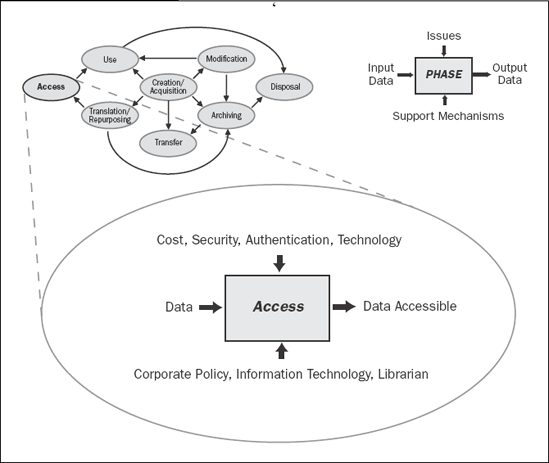4.12. Access
A characteristic of most Knowledge Management systems is information hiding, in that all information in the corporation isn't openly available to everyone. Typically, limited access to the information is provided to knowledge workers as a function of their position in the company and their need to know.
Access to information also can be limited by the sheer volume of information available. For example, in a KM system with hundreds of thousands of FAQs available to customer support reps, accessing the particular FAQ and response for the problem at hand can present a significant challenge. A parallel situation exits on the web, where the challenge is culling the desired information from the vast stores of information available. All too often, searching for a term or key word brings up a list of tens of thousands of possible web sites that may have little or no relevance to the desired information.
In Exhibit 4.8, the most significant issues related to the access phase of the KM life cycle are and information security, and cost, selecting the most appropriate technologies, and knowledge worker authentication. The cost of accessing information can vary considerably, depending on corporate policy, the interaction required from the librarian or other support staff, and the cost of the underlying technology infrastructure.
EXHIBIT 4.8. EXHIBIT 4.8

In addition to search ...
Get Essentials of Knowledge Management now with the O’Reilly learning platform.
O’Reilly members experience books, live events, courses curated by job role, and more from O’Reilly and nearly 200 top publishers.

